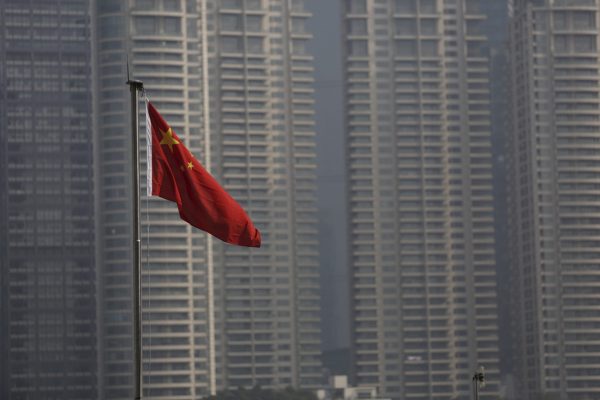Before 2000, capital shortages prompted China to invite capital inflows and restrict capital outflows. Chinese enterprises had to apply for approval to invest overseas on a case-by-case basis, which minimised overseas investment. By the end of 1999, China ranked 23rd in the world for outward investment with an ODI stock of US$27 billion, representing 0.4 per cent of the global total.
With its accession to the World Trade Organization in 2001, China embarked on a new journey of liberalisation. From 2000 to 2016, China relaxed ODI regulations and assumed an increasingly prominent position in global overseas investment.
While free trade agreements, double taxation avoidance agreements and bilateral investment treaties improved conditions for Chinese enterprises investing abroad, relaxed regulations and procedures drove ODI growth.
New rules implemented from 2004 under a decentralised structure streamlined the registration and approval of ODI projects. Project proposals and feasibility reports were cut. The threshold for ODI projects increased from US$1 million to US$30–200 million for resource development projects and US$10–50 million for other projects. Response times were also strictly specified to avoid delays in domestic approval procedures that would hamper overseas investment.
In the aftermath of the global financial crisis in 2008, numerous enterprises from developed countries faced a shortage of funds, shrinking markets and operational difficulties. Their market value shrivelled, opening doors to Chinese enterprises. Global foreign direct investment inflows fell by 14 per cent in 2008, while China’s ODI flows more than doubled to US$55.9 billion.
As overseas investment increased, ODI approval departments further decentralised their approval authority. China’s levels of ODI lifted more than threefold within nine years. By 2016, China’s ODI flows ranked second in the world, at 13.5 per cent of the global average.
Such rapid ODI growth poses three major challenges to China. Some enterprises with low awareness of legal compliance and a weak sense of social responsibility can damage the reputation of Chinese enterprises and products as well as China’s image internationally. Large-scale ODI can also adversely affect China’s balance of payments and exchange rate stability. Meanwhile, decision-making mistakes and high levels of debt have caused major economic losses for some ODI projects and may negatively affect Chinese domestic financial stability.
Aware of these risks, China issued two ODI-related regulations at the end of 2017. Issued on 18 December, the Code of Conduct for Overseas Investment by Private Enterprises obliges private companies to improve their internal management, observe legal requirements at home and abroad, fulfil their social responsibilities, protect the environment and strengthen overseas risk management. The equivalent code of conduct for SOEs is being drafted.
Issued on 26 December, the Administrative Measures for Overseas Investments by Enterprises further regulates overseas investment in three ways. It expands the transactions covered to include overseas investment by foreign entities controlled by Chinese enterprises and citizens, and details reporting and approval requirements for these investments. It contains regulatory mechanisms to improve collaborative supervision and project monitoring. And it improves disciplinary measures and proposes establishing a record of violations.
Moving forward, China’s ODI will continue to face domestic and international pressures. Domestically, Chinese enterprises must confront value-chain upgrading, environmental sustainability and rising labour costs. Internationally, challenges include industrial restructuring, evolving international rules and new trends in investment regulations. Western countries are establishing a comprehensive system of rules in trade, investment and services that aim to bolster investment liberalisation, expand the regulatory power of host governments, prioritise environmental and labour standards, and reinforce SOE regulations.
Despite the risks and challenges ahead, the positive effects of China’s overseas investment have been widely confirmed. These effects include improving firm productivity, expanding domestic employment, increasing domestic exports, improving export quality and accelerating the upgrading of trade structure.
ODI is also an important channel by which China contributes to the world. Overseas Chinese enterprises contribute greatly to taxation and employment in host countries, while large volumes of China’s ODI are improving infrastructure, enhancing connectivity and promoting economic growth in developing countries.
As China’s domestic production costs increase and economic restructuring continues, it will be necessary to guard against the negative impacts of large-scale outward investment and to prevent any future problems. While strengthening supervision, Chinese policymakers also need to respect the main goals of enterprises and the major role of the market.
Bijun Wang is Senior Research Fellow at the Institute of World Economics and Politics, Chinese Academy of Social Sciences (CASS).
Kailin Gao is a Ph.D candidate at the China Center for Economic Research, Peking University.
This article is abridged from Bijun Wang and Kailin Gao, ‘Outward direct investment: Restricted, relaxed and regulated stages of development’ in Ligang Song and Ross Garnaut (eds.), Forty Years of Chinese Reform, China Update, ANU Press, 2018.


what are the three steps